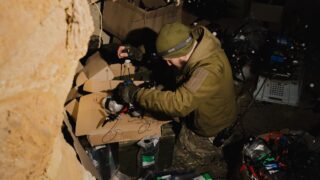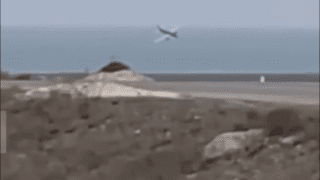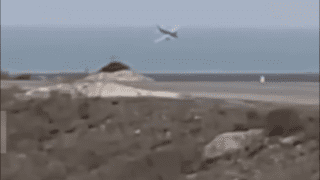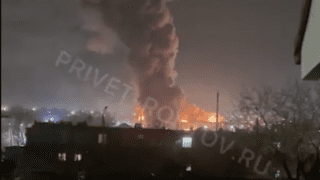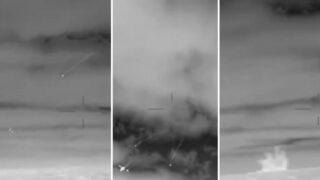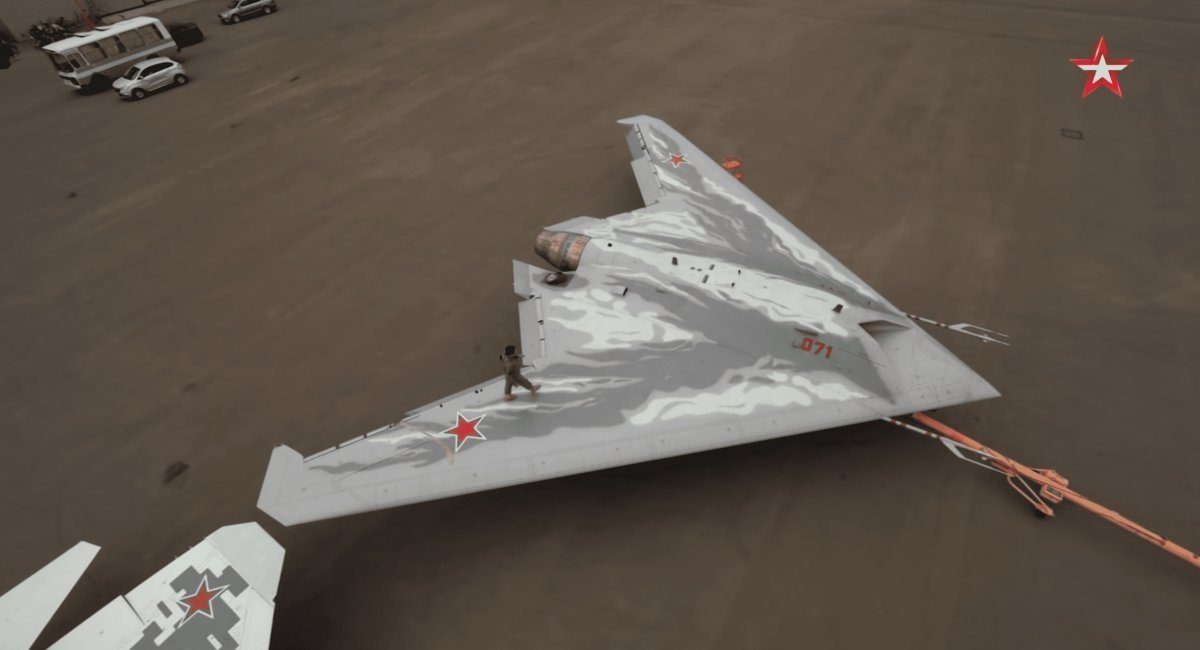
Russia’s S-70 Okhotnik crash casts doubt on Russian claims of advanced drone capabilities
Russia’s advanced S-70 Okhotnik heavy stealth combat drone suffered its first confirmed loss on 5 October 2024 in a friendly fire incident over Donetsk Oblast of Ukraine. Defence Blog says the S-70’s combat readiness remains questionable.
The Sukhoi S-70 Okhotnik-B, or “Hunter-B,” is a Russian heavy attack drone developed by Sukhoi and MiG. Claimed to be a sixth-generation stealth fighter, it incorporates technologies from the allegedly fifth-generation Su-57 Felon fighter jet and is intended to eventually operate under Su-57 pilot control. Reportedly, only two prototypes have been produced, with one now lost in Donetsk Oblast.
The incident occurred on 5 October during an operational test flight involving a pair of aircraft – a piloted Su-57 and the unmanned S-70 – that took off from Akhtubinsk Air Base, located about in Volgograd Oblast about 600 km from the front lines. The mission was part of the drone’s experimental trials aimed at testing its capabilities in live combat situations, according to Defence Blog.
Modern Russian Sukhoi S-70 Okhotnik stealth drone shot down above Ukraine
Reports indicate that a technical malfunction caused the drone to lose contact with its ground operator, veering off course toward Ukrainian-controlled territory. Radio intercepts from the flight control center revealed panic among the Russian military responsible for the test, Defence Blog says. Ground commanders reportedly ordered the accompanying Su-57 pilot to attempt to disrupt the rogue drone’s flight path, even suggesting using the aircraft’s wing to divert it. Ultimately, a decision was made to launch an air-to-air missile to bring down the drone.
The S-70 “Okhotnik” crashed in Ukraine-controlled Kostiantynivka, just 16 kilometers from the frontline, with its remnants recovered by Ukrainian forces. Initial assessments of the wreckage have cast doubt on Russian claims about the drone’s advanced capabilities. A Ukrainian defense expert stated,
“This is no advanced combat drone. It’s more like a glider equipped with basic flight capabilities and radio controls.”
The incident has exposed several limitations in the S-70 program. Contrary to Russian propaganda, the drone does not appear to feature the advertised stealth polymers or advanced artificial intelligence systems. The use of the Su-57 manned fighter as a command relay for the drone was seen as inefficient, highlighting the limitations of Russian networking capabilities, Defense Blog says. The S-70 reportedly lacks robust stealth technologies and does not feature network-centric systems comparable to NATO’s Link-16, instead relying on a basic radio link for guidance.
The destroyed aircraft is believed to be the rare Russian S-70 Okhotnik heavy attack UAV.
https://t.co/xDifBESK5s pic.twitter.com/sCToqvordT
— Euromaidan Press (@EuromaidanPress) October 5, 2024
The Russian Ministry of Defense has long promoted the S-70 as a “loyal wingman” to the Su-57, capable of engaging in coordinated missions and using a wide range of airborne weaponry. However, this incident casts doubt on the drone’s ability to execute sophisticated combat maneuvers, including the use of air-to-air missiles or precision-guided weaponry.
The S-70 program began in 2017, with the first prototype developed in Novosibirsk. Ground tests took place in late 2018, and since then, the drone has been part of Russia’s broader efforts to develop next-generation UAVs. However, it has so far functioned more as a technology demonstrator than a fully operational platform.
Defence Blog concludes that despite Russia’s continued development of the S-70, recent operational failures and setbacks indicate the drone is far from combat readiness.
Related:



